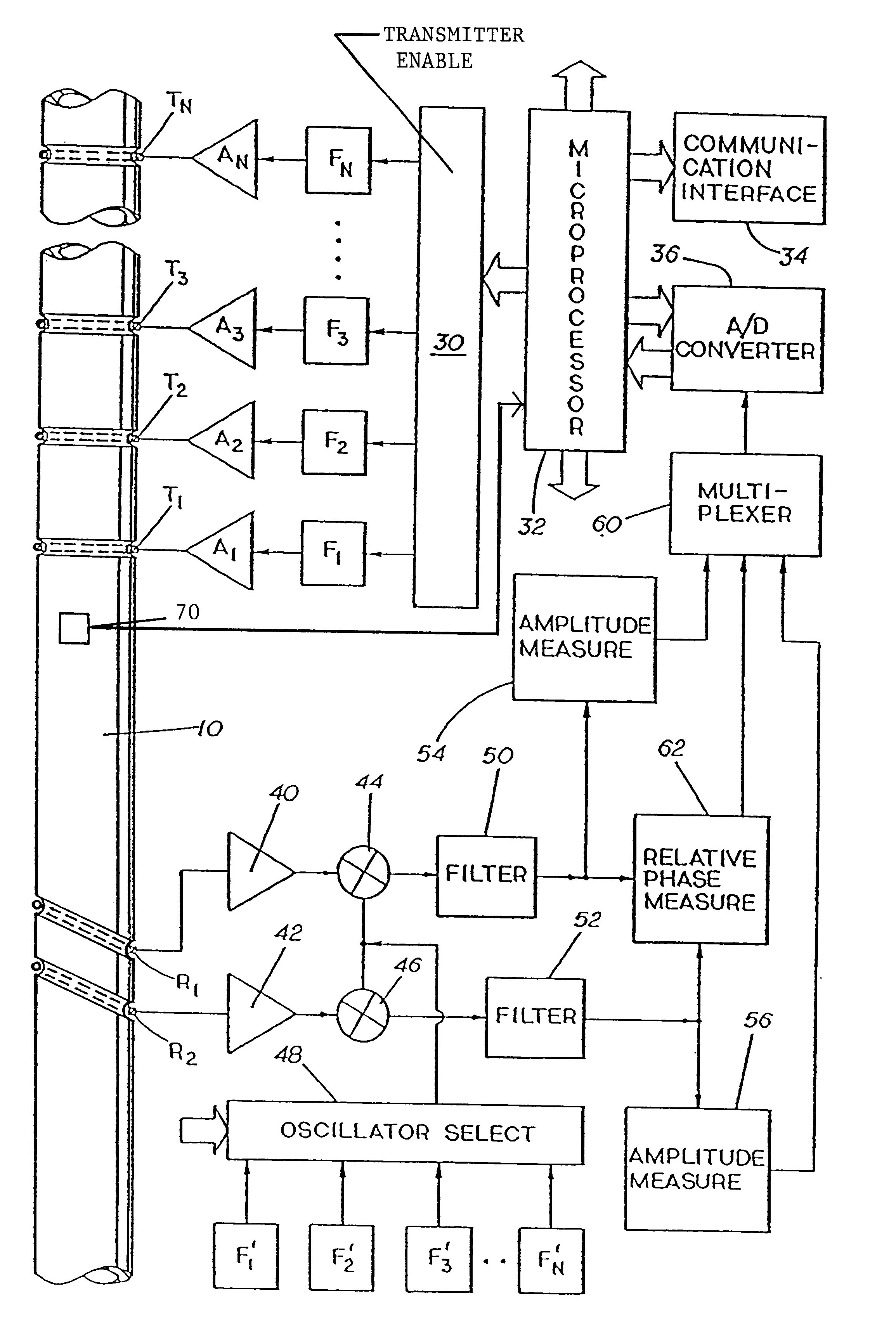Electromagnetic wave resistivity tool having a tilted antenna for geosteering within a desired payzone
a technology of electromagnetic wave resistivity and geosteering, which is applied in the direction of instruments, borehole/well accessories, surveys, etc., can solve the problems of reducing the mechanical strength of the tool, and affecting the accuracy of the tool
- Summary
- Abstract
- Description
- Claims
- Application Information
AI Technical Summary
Problems solved by technology
Method used
Image
Examples
Embodiment Construction
FIG. 1 illustrates a logging tool 10 in accordance with the present invention suspended in a borehole 12 within an earth formation 13 on a string of drill pipe 14. Drill string 14 includes one or more drill collars 11. Electromagnetic transmitters (antennas) 16, 18, and 20 (sometimes referred to herein as transmitters T.sub.1, T.sub.2, and T.sub.3, respectively) are spaced along the length of logging tool 10 from electromagnetic receivers (antennas) 22 and 24 (sometimes referred to herein as R.sub.1 and R.sub.2, respectively). Preferably, transmitters 16, 18, 20 and receivers 22, 24 are mounted in recesses in tool 10 (as indicated in FIG. 2) and are covered with a non-conductive material (not shown), as is well known in the art. If a transmitter is designed to operate at more than one frequency, for example, f.sub.1 =2 MHz and f.sub.2 =1 MHz, each receiver may comprise a pair of coils, with one coil tuned to f.sub.1 and one coil tuned to f.sub.2. Additionally, if desired, each pair ...
PUM
 Login to View More
Login to View More Abstract
Description
Claims
Application Information
 Login to View More
Login to View More - R&D
- Intellectual Property
- Life Sciences
- Materials
- Tech Scout
- Unparalleled Data Quality
- Higher Quality Content
- 60% Fewer Hallucinations
Browse by: Latest US Patents, China's latest patents, Technical Efficacy Thesaurus, Application Domain, Technology Topic, Popular Technical Reports.
© 2025 PatSnap. All rights reserved.Legal|Privacy policy|Modern Slavery Act Transparency Statement|Sitemap|About US| Contact US: help@patsnap.com



